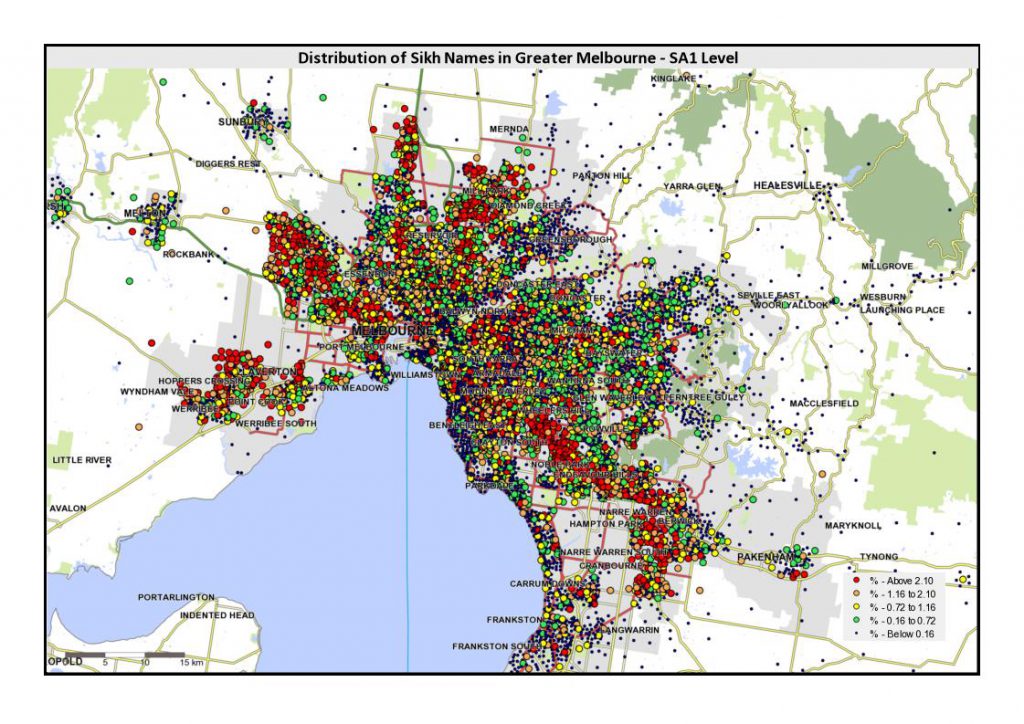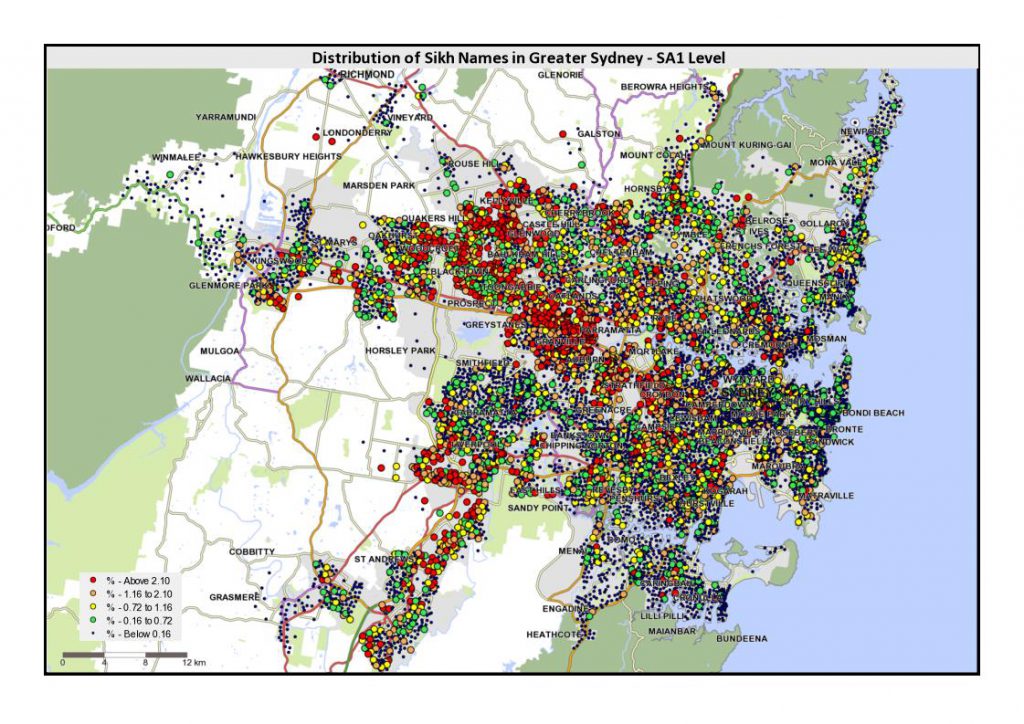Sikhs form one of the largest and fastest growing subgroups of Indian Australians with 96,164 identifying with Sikhism in the 2016 census – a growth of 363% over the 2006 figure.1
Origins data indicates an adult Sikh population of 79,944.
Most Sikhs originate in the Punjab region which straddles India and Pakistan. Unlike other religions of the sub-continent, the focus is on achieving peace and salvation in this life, rather than the afterlife.
Baptism into the Khalsa code of behaviour occurs at any age. At birth, Sikhs are given a first name and a family name, but after initiation as a Khalsa, they may add the name Singh (meaning Lion) for males or Kaur (princess) for females, or replace their family name with the Khalsa name. Sikh given names are un-gendered although gender may be implied through pronunciation. Sikh women retain their family name when they marry although they may choose to use their Khalsa name.2
Baptised Sikhs are obliged to wear the physical symbols of their status – unshorn hair, turban, comb, steel bracelet, drawers, and dagger. They also subscribe to a set of core values including adherence to the principles of equality, good deeds, simple living, sharing with others, living a family life and acceptance that happy and sad events are the will of their god.
Sikhs also have a range of prohibitions which they must respect including the avoidance of ritualistic behaviour, materialism, alcohol, tobacco, halal or kosher meat.3
As we might expect from naming conventions above, the most common Sikh family name in the Australian Origins database is Singh, followed by Kaur. Other common Sikh names include Sidhu, Dhillon and Kaiser. The most common first names are Gurpreet, Harpreet, Amandeep and Mandeep.4
By geography, almost 60% of Australian Sikhs are located in Greater Melbourne or Greater Sydney with a disproportionate preference for Melbourne. Sikhs congregate in well-defined areas, often in close proximity to Sikh temples or Gurdwaras.
In Melbourne the preferred areas are Taylors Lakes, Craigieburn, Hoppers Crossing/Tarneit, Bundoora, Balwyn North and the Dandenong Road axis from Mulgrave to Lynbrook. Bayside suburbs and the outer north eastern suburbs tend to be avoided.
 In Sydney, where 28% of adult Sikhs are located, preferred areas are in the outer west from Parramatta/Guildford to Bella Vista and Kings Langley, Edmonson Park and Strathfield. Less favoured areas include the eastern suburbs, harbour side and northern beaches.
In Sydney, where 28% of adult Sikhs are located, preferred areas are in the outer west from Parramatta/Guildford to Bella Vista and Kings Langley, Edmonson Park and Strathfield. Less favoured areas include the eastern suburbs, harbour side and northern beaches.

1. ABS Census, 2016 and 2006
2. https://en.wikipedia.org/wiki/Sikh_names
3. https://en.wikipedia.org/wiki/Sikh_philosophy
4. Origins database 2018